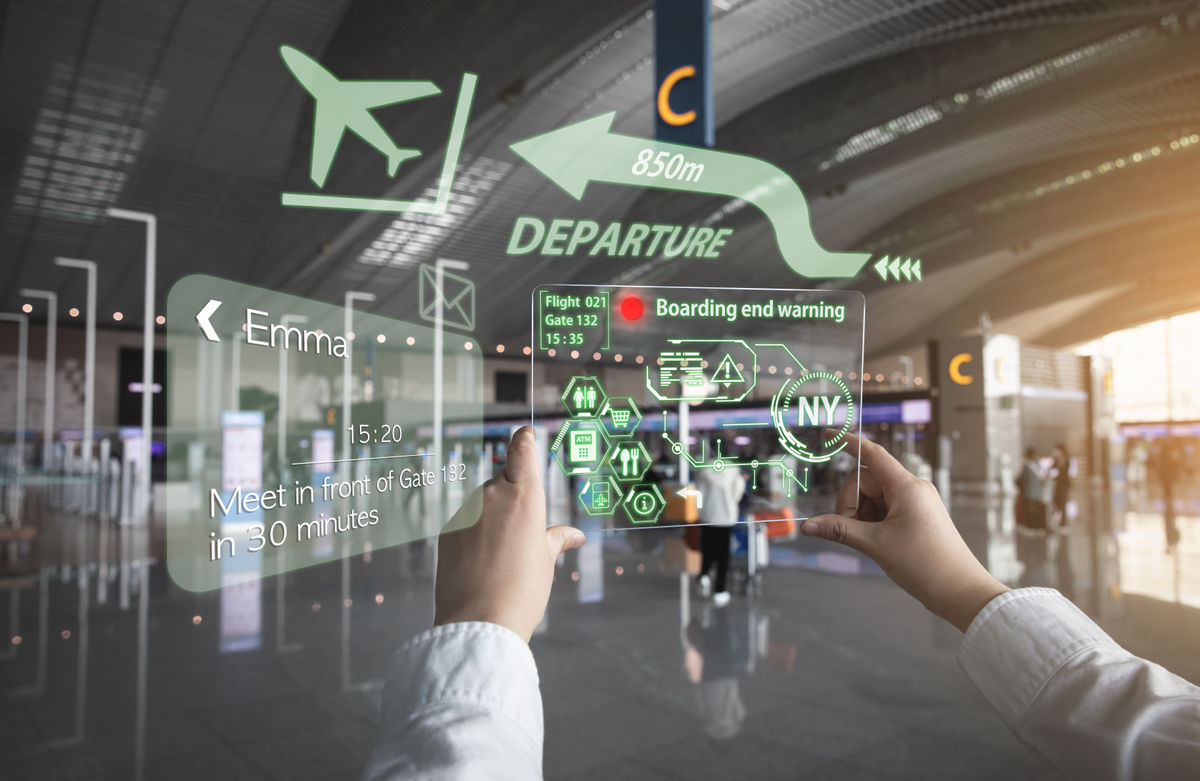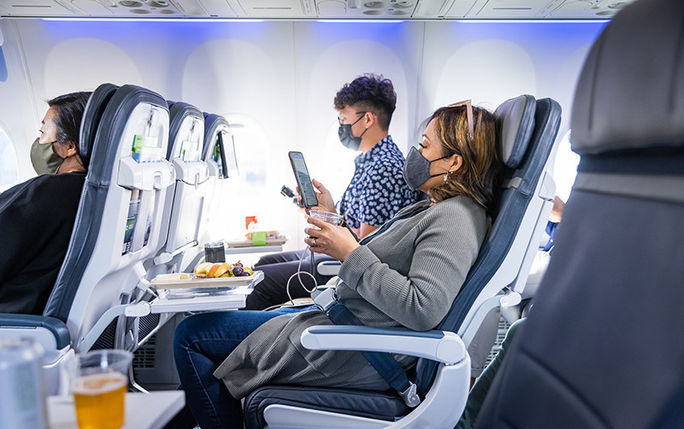Travel
How Technology Continues To Transform and Impact the Air Travel Experience

When it comes to technology’s impact on the end-to-end air travel experience, consumers are not exactly thrilled with the digital booking process, which has transformed ticket buying.
In-flight entertainment, meanwhile, has become a constantly evolving mosaic of offerings over recent years and in the future may even grow to include the use of virtual reality and metaverse headsets.
Those are just some of the high-level takeaways from the newly released report “The Future of the Airline Passenger Experience.”
Published by the travel data and insights firm OAG, the report explores the transformative impact of technology, data, and innovation on the full spectrum of traveler interactions with airlines in today’s travel landscape.
In particular the report analyzes how consumers feel about the online planning and booking process when purchasing tickets and how technology has reshaped that experience. The report also delves into the evolution of entertainment systems aboard aircraft.
Here’s a closer look at some of the report’s takeaways when it comes to booking airline tickets and engaging in on-board entertainment.
The booking experience: Digital but not delightful
Whether purchasing through OTAs or airlines directly, the airline ticket booking experience has become a highly digital experience.
In fact, very few travelers book airline tickets in non-digital ways anymore. On this front, the report reveals that a staggering 92% of today’s passengers —essentially the vast majority —opt for online booking channels.
“This encompasses both indirect methods via Online Travel Agencies (OTAs) and direct bookings through airline websites,” says the report.
Such a figure represents the highest level of digital engagement across all phases of the travel journey.
It also illustrates the widespread acceptance and normalization of online ticket purchasing that have evolved since the internet’s inception and the subsequent emergence of airline websites and OTAs in the early 2000s.
“There is no doubt: technology has fully saturated the booking experience,” says the report.
Despite the mass shift to digital booking of tickets, travelers are not exactly thrilled by the process.
“The process of planning and booking these adventures often fails to inspire joy among travelers,” explains the report with regard to the online ticket booking experience.
This sentiment appears to be the strongest in the United States where nearly half (43 percent) of U.S. travelers find no pleasure in booking their travels.
This statistic signals a crucial area for improvement, and it implies that merely digitizing the booking process is insufficient, the report suggests.
It’s also interesting to note that other industries beyond travel, have far higher approval ratings when it comes to the digital experience they offer customers.
According to the report sectors like fashion, finance, and hospitality, such as restaurants, outperform travel in terms of the online booking experience.
The clothing industry leads in satisfaction with the booking experience, followed by the financial industry and the restaurant industry.
The complexity of booking airline tickets online is cited as one of the major issues for air travelers. In fact, nine out of 10 airline ticket shopping carts are entirely abandoned. Meanwhile, more advanced travel booking options are among the most mentioned request among travelers.

Enjoy inflight entertainment on your own device on Alaska Airlines flights. (photo via Alaska Airlines Media)
In-flight entertainment: A mosaic of offerings
Technology has also profoundly reshaped the in-flight entertainment experience offered by airlines over recent years.
Gone are the early days of overhead projectors and single in-aisle monitors (so-called communal screens).
Today’s in-flight entertainment experience is dominated by personal seat-back touchscreens and Wi-Fi connectivity, all of which illustrates how technology has evolved into a critical arena for airlines to distinguish their offerings and enhance passenger satisfaction, says the report.
In recent years, the movement towards high-speed satellite Wi-Fi onboard has reshaped perspectives on [in-flight entertainment] systems.
In increasing number of airlines are providing passengers with the capability to stream content directly to their personal devices, highlighting the growing Bring Your Own Device (BYOD) trend. In fact, because of that development, some carriers have begun to phase out their in-seat screens altogether.
The assumption is that passenger satisfaction will not falter, as people often prefer watching content on their own devices,” says the report. “Moreover, eliminating screens can lead to significant cost savings for airlines by reducing the need for heavy and maintenance-intensive seat-back systems.”
This shift however, has ignited a heated debate within the industry, with American Airlines and Delta Air Lines embarking on very different strategies when it comes to the future of in-flight entertainment.
American Airlines, the world’s largest airline by fleet size, has made clear that it will remove seat-back entertainment screens from its new fleet of Boeing aircraft as part of its interior refresh project known as Oasis, says the report. More than 90 percent of the carrier’s passengers bring their own laptop, tablet or mobile phones onboard.
Delta Airlines, on the other hand, has indicated that it will not only maintain, but expand, seat-back entertainment over the coming years. The airline apparently “believes in offering passengers flexibility and choice by providing both seat-back entertainment systems and the ability to stream content to personal devices,” said the report.
Delta’s continues to believe in the value of seat-back entertainment as a crucial part of the in-flight experience. United Airlines apparently agrees. It is currently installing new seat-back monitors on most of its 737 and A320 family aircraft.
Beyond mere entertainment, personal in-seat screens offer airlines a variety of opportunities to earn ancillary revenue, says the report. This includes through displaying targeted advertising and even offering shopping experiences through setback monitors.
Singapore Airlines, for instance, has introduced a live online in-flight shopping experience via setback monitors. The airline offers passengers the convenience of shopping from a curated selection of over 4,000 products that can be purchased duty-free and delivered on their next flight or directly to their homes.
And shopping is merely one of the evolving uses for seat-back monitors. The report also predicts a future in which the monitors will become “comprehensive travel assistants.”
Further in the future, virtual reality and metaverse headsets (which could include Apple’s Vision Pro, with its promise of an immersive, personal 4k movie theater experience) may redefine the in-flight entertainment offerings even more, and conventional seat-back screen and personal smartphone entertainment might become artifacts of the past.
The use of virtual reality for in-flight entertainment in the future “not only underscores the potential for unparalleled privacy and entertainment freedom but also signals a shift towards a more personalized, boundary-pushing onboard journey,” says the report.
For the latest travel news, updates and deals, subscribe to the daily TravelPulse newsletter.


)






